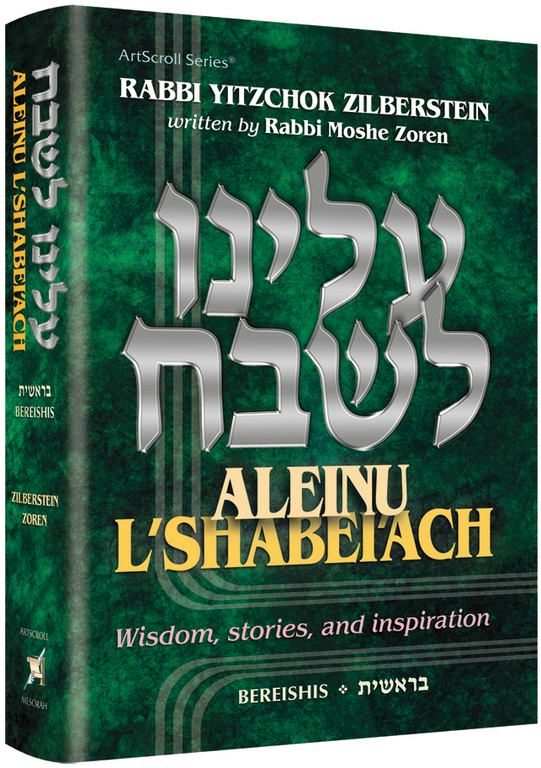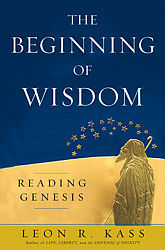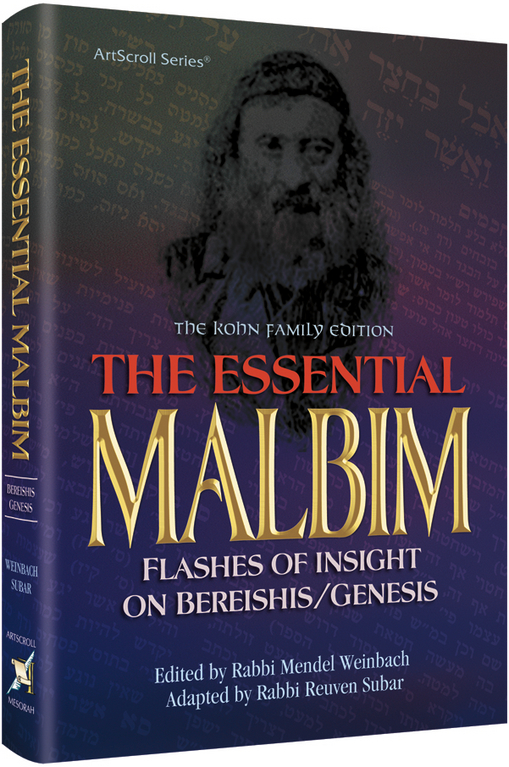The Kosher Bookworm: Continued new beginnings
Posted
Every year at this time our thoughts go back in time to an age of antiquity that beckons us to ponder the true meaning of what ”beginnings” are really all about. This is forced upon us by the mandate of our Jewish calendar and the annual reading of the Torah, a reading, as we all know, that both terminates and begins anew at this time of year.
The novelty of having to rewind our theological clock and leap back in time from Moshe at the shores of the Jordan to the very beginning of creation itself has no parallel in any other belief system. This novelty forces us to revisit and interpret events and ideas that have come to define our reasons for existence and help us refine our recognition of the rulership of G-d through his example as the Creator.
We accomplish this by the many commentaries that seem to flow endlessly from the minds of our spiritual and communal leaders. These commentaries on the Bible, starting with Genesis, help sharpen our appreciation of the text and the motivations of the characters whose lives play out annually before us.
This year is no different.
Over one hundred fifty years ago Rabbi Meir Leibush Malbim (1809-1879) wrote his commentary on the Bible in the span of thirty years. The commentary was an instant success, accepted by all sectors of Jewry for its clarity in helping readers understand the links between the written and oral law.
To date, there had been only one attempt to render the Malbim’s work into English, that of Zvi Faier's 1978 work, published by Hillel Press in Jerusalem. In “The Essential Malbim; Flashes of Insight on Genesis” [Artscroll, 2009], edited by Rabbi Mendel Weinbach and adapted by Rabbi Reuven Subar, the Malbim again appears in English, this time in a shorter anthologized format based upon selected verses and themes.
In his introduction, Rabbi Weinbach details a brief biography of the Malbim. One historical note unknown by many was that the Malbim declined two very distinguished positions, one as the successor to Rabbi Akiva Eiger and the other as the chief rabbi of New York City.
This book consists of an adaptation of the Malbim’s commentary into a series of very well written essays that are each concise in both form and style. Each essay is anchored by a specific verse in the original Hebrew with English translation, followed by a short essay. Unfortunately, this work does not contain an index of any sort, nor is there any acknowledgement of the prior English translation noted at the beginning of this essay. That is most unfortunate.
The next work is a translation of a very special and popular work with the unusual title, “Aleinu L’Shabei’ach” on Genesis [Artscroll, 2009]. This work is based upon conversations with Rabbi Yitzchok Zilberstein, a son-in-law of Rabbi Yosef Shalom Elyashiv shlita, and compiled by Rabbi Moshe Zoren.
The book contains stories of great rabbis and poskim as well as simple folk as they relate to each parsha’s text and themes. Each chapter begins with a pasuk [verse] from the parsha and is followed with a story told in a style reminiscent of the Dubner Magid, wherein rabbis and plain simple people are set up as examples of conduct from which the reader comes away with a lesson on mussar and chesed.
In the original Hebrew version this work proved to be very popular and its translation into English was awaited by many for whom the original was too daunting to read. This work represents a classic example of how our Torah text can be expanded to represent a work that transcends simple commentary and serves as a valuable educational tool to teach Jewish ethics both to our youth and ourselves.
In contrast, the next book reflects a more cosmopolitan approach to the Book of Genesis. Titled, “The Beginning of Wisdom: Reading Genesis” [Free Press, 2003] by Dr. Leon Kass, this book recasts the original text into a contemporary mold. Kass serves as the narrator retelling every chapter of the sacred text as history, morality, philosophy and analysis, as well as probing the inner motivations of the characters in each episode.
In many respects this book reads like a commentary, helping to explain to the reader the inner meanings and motivations the text is trying to teach us. Despite the book's fancy and sophisticated style, this is a traditional interpretation of an ancient work. The author, a professor of social thought and an expert on bioethics, clearly accepts the literal interpretation of Genesis as well as the historical nature of the Torah.
Considering the background of the author, and his spiritual journey to traditional Judaism from his prominent role as chair of the President’s Council on Bioethics during the Bush Administration, one would find it most remarkable for him to have written so detailed and comprehensive a book (it is 700 pages in length) in so lucid a style. This book is a great read and an excellent addition to anyone’s library.
I would like to conclude with the following by theologian Rabbi Dr. Nathan Lopez Cardozo, who in a recent essay noting the nature of the Torah reading cycle made this astute observation:
“This could be the purpose of the Torah reading in a synagogue. It is not conventional Torah learning but, rather, somewhat of a wake-up call. It has a therapeutic function by which man needs to be shocked by the text before he even has a chance to get used to its deeper content. And although he has read it for years before, the fact that the story appears again an entire year later, and no earlier, gives him a chance to forget it and then rediscover it as never before. In this way, it remains fresh and continues to amaze the reader with its multiple possibilities and its grand image.”
By Alan Jay Gerber
Issue of Oct. 23, 2009 / 5 Cheshvan 5770
Every year at this time our thoughts go back in time to an age of antiquity that beckons us to ponder the true meaning of what ”beginnings” are really all about. This is forced upon us by the mandate of our Jewish calendar and the annual reading of the Torah, a reading, as we all know, that both terminates and begins anew at this time of year.
The novelty of having to rewind our theological clock and leap back in time from Moshe at the shores of the Jordan to the very beginning of creation itself has no parallel in any other belief system. This novelty forces us to revisit and interpret events and ideas that have come to define our reasons for existence and help us refine our recognition of the rulership of G-d through his example as the Creator.
We accomplish this by the many commentaries that seem to flow endlessly from the minds of our spiritual and communal leaders. These commentaries on the Bible, starting with Genesis, help sharpen our appreciation of the text and the motivations of the characters whose lives play out annually before us.
This year is no different.
Over one hundred fifty years ago Rabbi Meir Leibush Malbim (1809-1879) wrote his commentary on the Bible in the span of thirty years. The commentary was an instant success, accepted by all sectors of Jewry for its clarity in helping readers understand the links between the written and oral law.
To date, there had been only one attempt to render the Malbim’s work into English, that of Zvi Faier's 1978 work, published by Hillel Press in Jerusalem. In “The Essential Malbim; Flashes of Insight on Genesis” [Artscroll, 2009], edited by Rabbi Mendel Weinbach and adapted by Rabbi Reuven Subar, the Malbim again appears in English, this time in a shorter anthologized format based upon selected verses and themes.
In his introduction, Rabbi Weinbach details a brief biography of the Malbim. One historical note unknown by many was that the Malbim declined two very distinguished positions, one as the successor to Rabbi Akiva Eiger and the other as the chief rabbi of New York City.
This book consists of an adaptation of the Malbim’s commentary into a series of very well written essays that are each concise in both form and style. Each essay is anchored by a specific verse in the original Hebrew with English translation, followed by a short essay. Unfortunately, this work does not contain an index of any sort, nor is there any acknowledgement of the prior English translation noted at the beginning of this essay. That is most unfortunate.
The next work is a translation of a very special and popular wo rk with the unusual title, “Aleinu L’Shabei’ach” on Genesis [Artscroll, 2009]. This work is based upon conversations with Rabbi Yitzchok Zilberstein, a son-in-law of Ra bbi Yosef Shalom Elyashiv shlita, and compiled by Rabbi Moshe Zoren.
The book contains stories of great rabbis and poskim as well as simple folk as they relate to each parsha’s text and themes. Each chapter begins with a pasuk [verse] from the parsha and is followed with a story told in a style reminiscent of the Dubner Magid, wherein rabbis and plain simple people are set up as examples of conduct from which the reader comes away with a lesson on mussar and chesed.
In the original Hebrew version this work proved to be very popular and its translation into English was awaited by many for whom the original was too daunting to read. This work represents a classic example of how our Torah text can be expanded to represent a work that transcends simple commentary and serves as a valuable educational tool to teach Jewish ethics both to our youth and ourselves.
In contrast, the next book reflects a more cosmopolitan approach to the Book of Genesis. Titled, “The Beginning of Wisdom: Reading Genesis” [Free Press, 2003] by Dr. Leon Kass, this book recasts the original text into a contemporary mold. Kass serves as the narrator retelling every chapter of the sacred text as history, morality, philosophy and analysis, as well as probing the inner motivations of the characters in each episode.
In many respects this book reads like a commentary, helping to explain to the reader the inner meanings and motivations the text is trying to teach us. Despite the book's fancy and sophisticated style, this is a traditional interpretation of an ancient work. The author, a professor of social thought and an expert on bioethics, clearly accepts the literal interpretation of Genesis as well as the historical nature of the Torah.
Considering the background of the author, and his spiritual journey to traditional Judaism from his prominent role as chair of the President’s Council on Bioethics during the Bush Administration, one would find it most remarkable for him to have written so detailed and comprehensive a book (it is 700 pages in length) in so lucid a style. This book is a great read and an excellent addition to anyone’s library.
I would like to conclude with the following by theologian Rabbi Dr. Nathan Lopez Cardozo, who in a recent essay noting the nature of the Torah reading cycle made this astute observation:
“This could be the purpose of the Torah reading in a synagogue. It is not conventional Torah learning but, rather, somewhat of a wake-up call. It has a therapeutic function by which man needs to be shocked by the text before he even has a chance to get used to its deeper content. And although he has read it for years before, the fact that the story appears again an entire year later, and no earlier, gives him a chance to forget it and then rediscover it as never before. In this way, it remains fresh and continues to amaze the reader with its multiple possibilities and its grand image.”
Report an inappropriate comment
Comments

 44.0°,
Mostly Cloudy
44.0°,
Mostly Cloudy 









